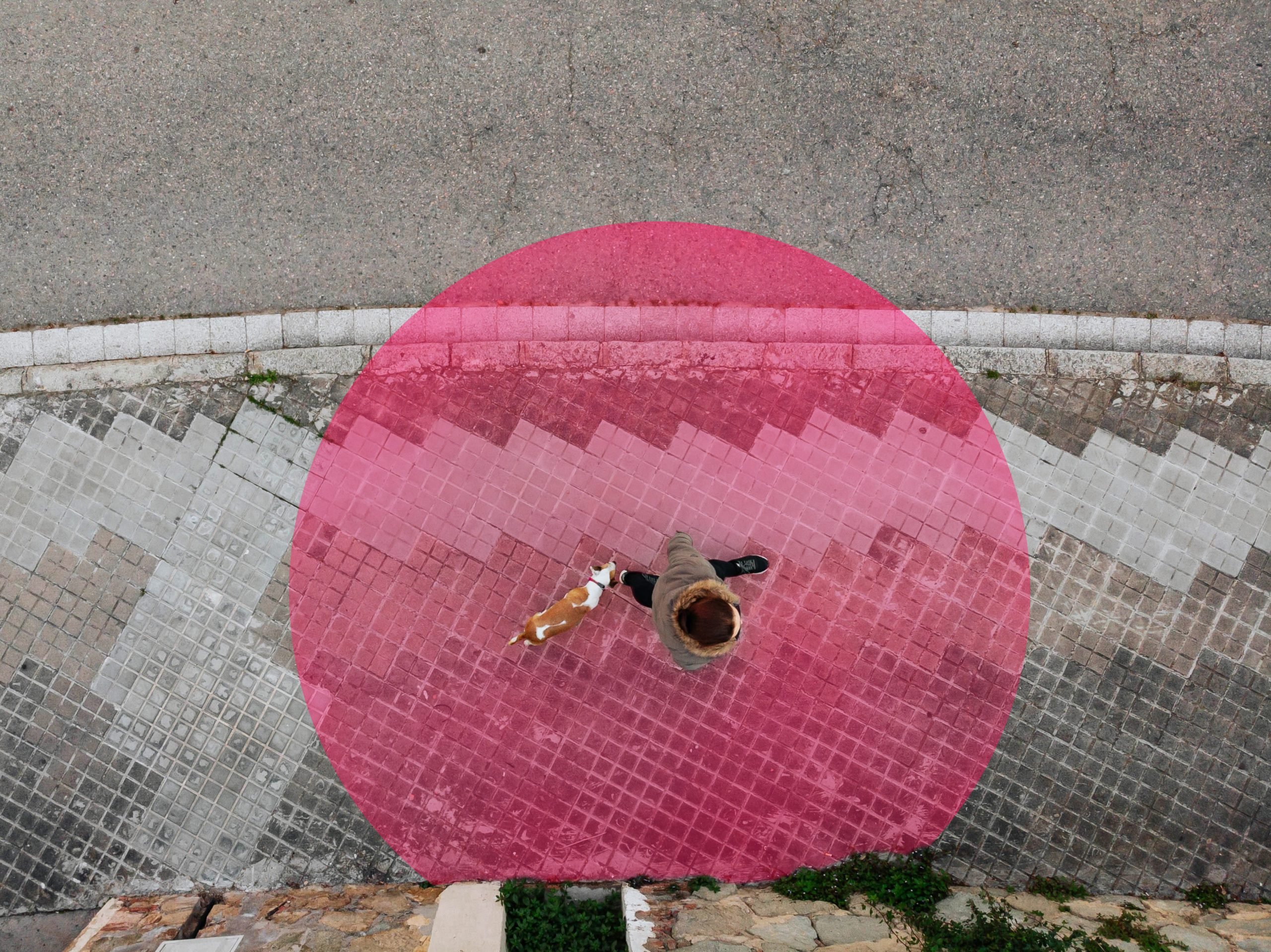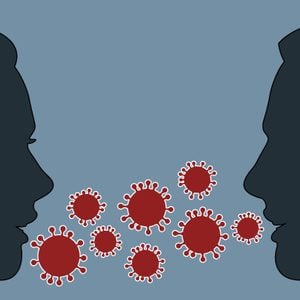Why Some People Are More Likely to Spread Covid-19 Than Others
Updated: Oct. 13, 2022
When it comes to coronavirus "super spreader" events, a relatively small proportion of virus carriers are thought to be responsible for most cases of Covid-19 transmission. Is there anything actually different about these people?
Understanding the spread of Covid-19
One of the many mysteries surrounding Covid-19 is why so few people seem to be responsible for transmitting it to so many. Preliminary research published in Epidemiology suggests that fewer than 20% of Covid-19 carriers are responsible for 80% of new cases.
“The overwhelming majority of people infect very few people or none at all,” says Robert Glatter, MD, an emergency physician with Lenox Hill Hospital in New York City. “Basically, it’s a select minority of individuals who are aggressively spreading the virus. These are the so-called ‘super spreaders.'”
How many people do you need to infect to be considered a high-risk individual? There’s no specific number, says Dr. Glatter. But it’s more than the two or three people researchers say a Covid-19 patient infects, on average. The bigger mystery is why some people spread the virus to so many people and others do not.
No one has an answer right now, but there are several leading theories explained by top health experts.
Get The Healthy @Reader’s Digest newsletter
Viral load
Viral load refers to how much virus you have circulating in your body. The idea is that some people harbor more virus than others, which means they can spew out more infectious particles, says Aaron Glatt, MD, an expert with the Infectious Diseases Society of America.
A study published in July 2020 in JAMA Network Open suggests that people with a high viral load can push millions of viral particles into the air, especially if they’re coughing. That’s a lot more than someone with a lower viral load who is breathing normally.
That’s why the Centers for Disease Control and Prevention recommends everyone wear a mask in public settings, when around people you don’t live with, and when you can’t stay six feet away from others.
“People exposed to people with a mask have less serious consequences because the masks don’t allow the virus to spread as much,” says Dr. Glatt, who is also a professor and chair of medicine at Mount Sinai South Nassau.
5 Reasons to Wear a Face Mask Other Than Covid-19

The shedding cycle
How infectious a person is may also have to do with where they are in their infectious cycle. This means a lot of people could infect many others if the timing is right.
“Shedding of transmissible virus peaks fairly early in infection and drops off over seven to 10 days,” says David M. Aronoff, MD, director of the division of infectious diseases at Vanderbilt University Medical Center in Nashville. “So one reason why ‘Person A’ might be shedding more virus than ‘Person B’ could be where they are in the course of illness.”
In general, you’re at greatest risk for spreading the virus a couple of days before symptoms appear (when you’re presymptomatic) and during the first few days of symptoms. The period of time before you actually develop Covid-19 symptoms—such as a cough, fever, and trouble breathing—is most problematic. You could be out and about, spreading the virus without knowing it.
How Long Can You Test Positive for Covid-19 After Infection?
Asymptomatic transmission
Between 20 and 40% of people with Covid-19 never develop symptoms, says Dr. Aronoff. These asymptomatic people may also transmit the virus, but not as much as someone who is presymptomatic, he adds.
However, they pose the same risk as presymptomatic cases. “They’re completely unaware they’re uninfected so they may be engaging in risky behavior,” explains Dr. Aronoff. “We really don’t have the ability to predict who is asymptomatic and who is presymptomatic.”
A study published in August 2020 in JAMA Pediatrics suggests that asymptomatic children may also transmit the virus.
Different viral strains
All viruses mutate rapidly, meaning there can be many strains at any one time—and all have slightly different characteristics. That means individual people may be infected with a more contagious strain of SARS-CoV-2, the virus that causes Covid-19.
“Certain types of viruses may be more contagious than others,” says infectious diseases expert Peter Katona, MD, chair of the infection control working group at UCLA Fielding School of Public Health in Los Angeles.
The right (or wrong) circumstances
No matter how contagious, an individual can’t transmit the virus unless he or she has an opportunity—like, say, a crowded indoor event. The individual and the environment go hand in hand, says Dr. Aronoff.
Take the same person and put them in different situations—one in a public park with others several feet away and the other in a packed bar—and you will have vastly different outcomes. “Your worst-case scenario is a crowded bar with poor ventilation and you’re shouting because the music is on,” says Dr. Aronoff.
“Lots of outbreaks around the world have been linked to single events where a super spreader likely infected dozens of people,” says Dr. Glatter. Some of the most high-profile super spreader events were a choir practice in Washington State, a megachurch gathering in South Korea and the White House Rose Garden event in September 2020.
When it comes to Covid-19, it’s safer to be outside than inside. But some indoor environments are better than others. Ventilation, ambient temperature, and humidity play a role by affecting droplet size and, thus, how far and how well they travel, says Dr. Aronoff.
How to Tell if Your Symptoms Are Covid-19 or the Flu
Social distancing and mask wearing
An individual is also more likely to infect others in venues where many people aren’t practicing proper Covid-19 precautions, like keeping a safe distance and wearing masks. “It depends on how sloppy you are,” says Dr. Katona. “At the White House [Rose Garden event in 2020], they were observing no precautions at all.”
Dr. Glatt says at least 90% compliance with wearing masks, practicing social distancing and washing your hands appropriately would dramatically tip the scales of Covid-19 transmission.
Biological differences
It’s also possible that biological differences may make some people more likely to spread the virus and others more likely to get it. “We can’t rule out that there may be genetic traits or other susceptibilities that make certain (infected) people better factories for the virus,” says Dr. Aronoff. “Some of this is statistics and roulette.”
In other words, there’s a lot of randomness in how Covid-19 spreads and infects. The virus is also taking advantage of our very humanness.
“We are a very social species and if we don’t want to be socially distanced and don’t want to be masked, we keep providing opportunities,” says Dr. Aronoff. “We keep spinning the roulette wheel.”
For more wellness updates, follow The Healthy on Facebook, Instagram, and Twitter. Keep reading:



